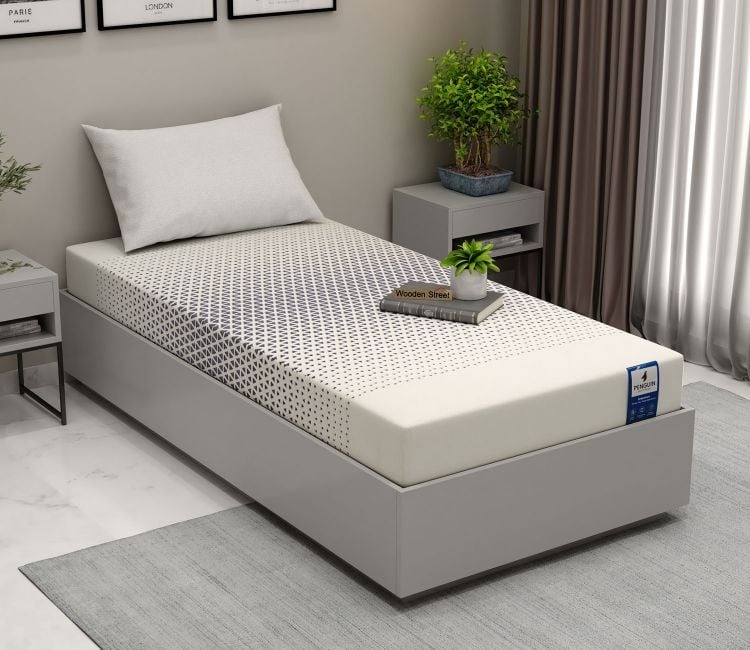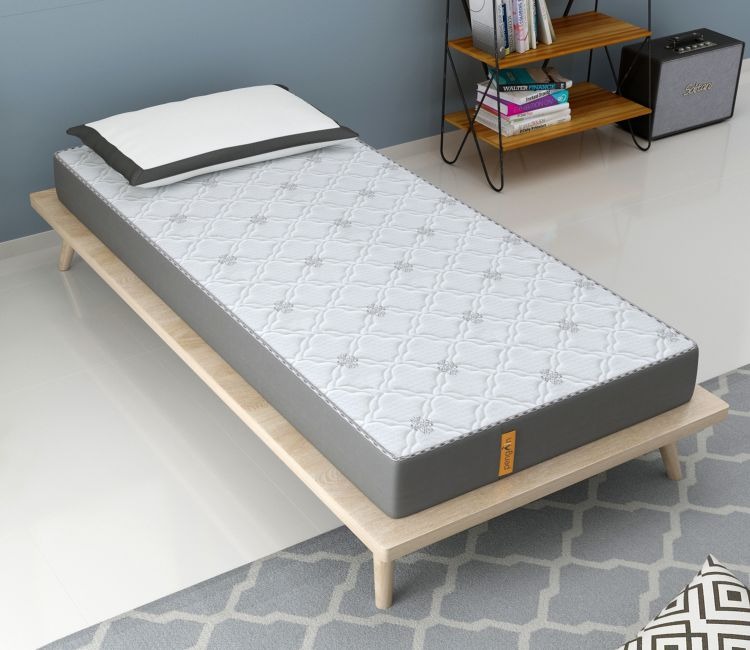Buying a mattress is one of the most important decisions you can make for your health and well-being. A good night’s sleep directly impacts your productivity, mood, and overall physical health. When it comes to choosing a single bed mattress, it becomes even more crucial to pick the right one — especially if you’re buying it online where you can’t physically test it beforehand.
From understanding mattress materials to knowing the right firmness level, several factors go into selecting the best single mattress. This blog will help guide you through all the essentials to ensure your online mattress shopping experience is smooth, informed, and rewarding.

1. Understand Your Needs First
Before exploring mattress types, it’s important to ask yourself:
- Who will use the mattress? (Kids, teens, adults, guests)
- How frequently will it be used? (Daily, occasionally)
- What’s your preferred sleeping position? (Back, side, stomach)
- Do you have any health concerns? (Back pain, posture issues, allergies)
- What is your budget?
Answering these questions will narrow down your choices and help you find a mattress that aligns with your needs.
2. Know the Dimensions of a Single Bed Mattress
A standard single bed mattress generally measures around 72 to 78 inches in length and 36 to 38 inches in width. However, some mattresses offer slight variations depending on region or customization. Before buying online:
- Measure your bed frame to ensure a perfect fit.
- Check the thickness of the mattress — thicker mattresses (6–8 inches) usually offer more support and durability than thinner ones.
3. Choose the Right Mattress Material
The material of the mattress affects its comfort, durability, breathability, and cost. Here are the most common types:
● Memory Foam
- Contours to the body
- Excellent for pressure relief
- Good for side and back sleepers
● Latex
- Made from natural or synthetic rubber
- Breathable and bouncy
- Hypoallergenic and eco-friendly
● Spring or Innerspring
- Contains metal coils or springs
- Good airflow and bounce
- Economical but can be noisy over time
● Hybrid
- Combines foam and spring technologies
- Offers both support and comfort
- Usually on the pricier side
● Coir or Coconut Fiber
- Natural, firm, and breathable
- Suitable for warm climates
- Budget-friendly
Each material has its pros and cons. Choose based on your sleep preferences, body weight, and environmental needs.

4. Pick the Right Firmness Level
Mattresses come in different firmness levels — soft, medium, medium-firm, and firm. The right firmness depends on your sleep posture and comfort level:
- Soft to Medium: Good for side sleepers who need cushioning at shoulders and hips.
- Medium to Medium-Firm: Ideal for back sleepers as it supports the spine’s natural curve.
- Firm: Best for stomach sleepers and those needing extra support, such as people with back pain.
Most online sellers now list firmness ratings in the product description, making it easier for buyers to assess.
5. Check for Support and Pressure Relief
A quality mattress should support your body evenly and relieve pressure at key areas like shoulders, hips, and lower back. To ensure that:
- Choose mattresses that maintain spinal alignment.
- Avoid very soft mattresses that sag under your weight.
- Opt for mattresses with zoned support or orthopedic layers if you have posture or pain issues.
Support doesn’t necessarily mean firmness — even a soft mattress can offer great support if it’s designed well.
6. Look for Motion Isolation if Needed
If your single bed mattress is going to be used in a shared space or you are a light sleeper, motion isolation becomes essential. Memory foam and latex mattresses tend to isolate motion better than innerspring ones. This feature is helpful to prevent sleep disturbances caused by movement on the bed.
7. Temperature Regulation and Breathability
Do you sleep hot at night? Then look for mattresses that allow airflow and dissipate heat.
- Gel-infused memory foam or open-cell foam can help regulate body temperature.
- Latex and coir mattresses are naturally breathable and cooler.
- Spring mattresses also allow air to circulate better than dense foam mattresses.
If you’re in a tropical climate, breathable materials are essential for undisturbed sleep.
8. Allergy-Friendly Features
For people with allergies or asthma, choosing a hypoallergenic mattress is crucial. Latex and synthetic foams often resist dust mites, mold, and allergens. Additionally, using a washable mattress protector can extend hygiene and mattress life.
9. Read Reviews and User Ratings
Since you can’t touch or lie down on the mattress when buying online, customer reviews become your best friend. Look for:
- Ratings on comfort and durability
- Long-term feedback (3+ months of use)
- Comments on customer service and delivery experience
Genuine customer insights often reveal details that product descriptions overlook.
10. Evaluate Trial Period and Return Policy
Many online sellers now offer sleep trials ranging from 30 to 120 nights. This means you can try the mattress at home and return or exchange it if it doesn’t suit you. Always check:
- Duration of the trial period
- Return or exchange process
- Any hidden charges (pickup fees, restocking fees)
A hassle-free return policy ensures peace of mind while shopping.
11. Check Warranty and Durability
A good mattress should last at least 5 to 10 years depending on the material. Make sure the product comes with a manufacturer’s warranty that covers manufacturing defects, sagging, and foam breakdown.
- Memory foam and latex: Usually last 8–10 years
- Spring mattresses: Last around 5–7 years
- Coir mattresses: Shorter lifespan (3–5 years)
A longer warranty often indicates a more durable product.
12. Budget vs. Value
It’s easy to be tempted by the cheapest option, but don’t compromise on sleep quality. Look for the best value-for-money mattress rather than the lowest price.
- Set a reasonable budget.
- Focus on features you need.
- Compare products across multiple platforms.
- Look for seasonal offers, combo deals (mattress + protector), or free shipping.
Remember, a mattress is an investment in your health — not just furniture.
Final Thoughts
Buying the best single bed mattress online doesn’t have to be stressful. By understanding your personal needs and being informed about different materials, support types, and comfort levels, you can make a confident choice. Always consider factors like body type, sleeping habits, and climate before making a decision.
In today’s digital age, convenience is key — but so is caution. Read specifications carefully, look at customer feedback, and take advantage of return policies and warranties to ensure you find a mattress that gives you restful, uninterrupted sleep.
With the right mattress, even a single bed can offer maximum comfort and long-lasting support.


